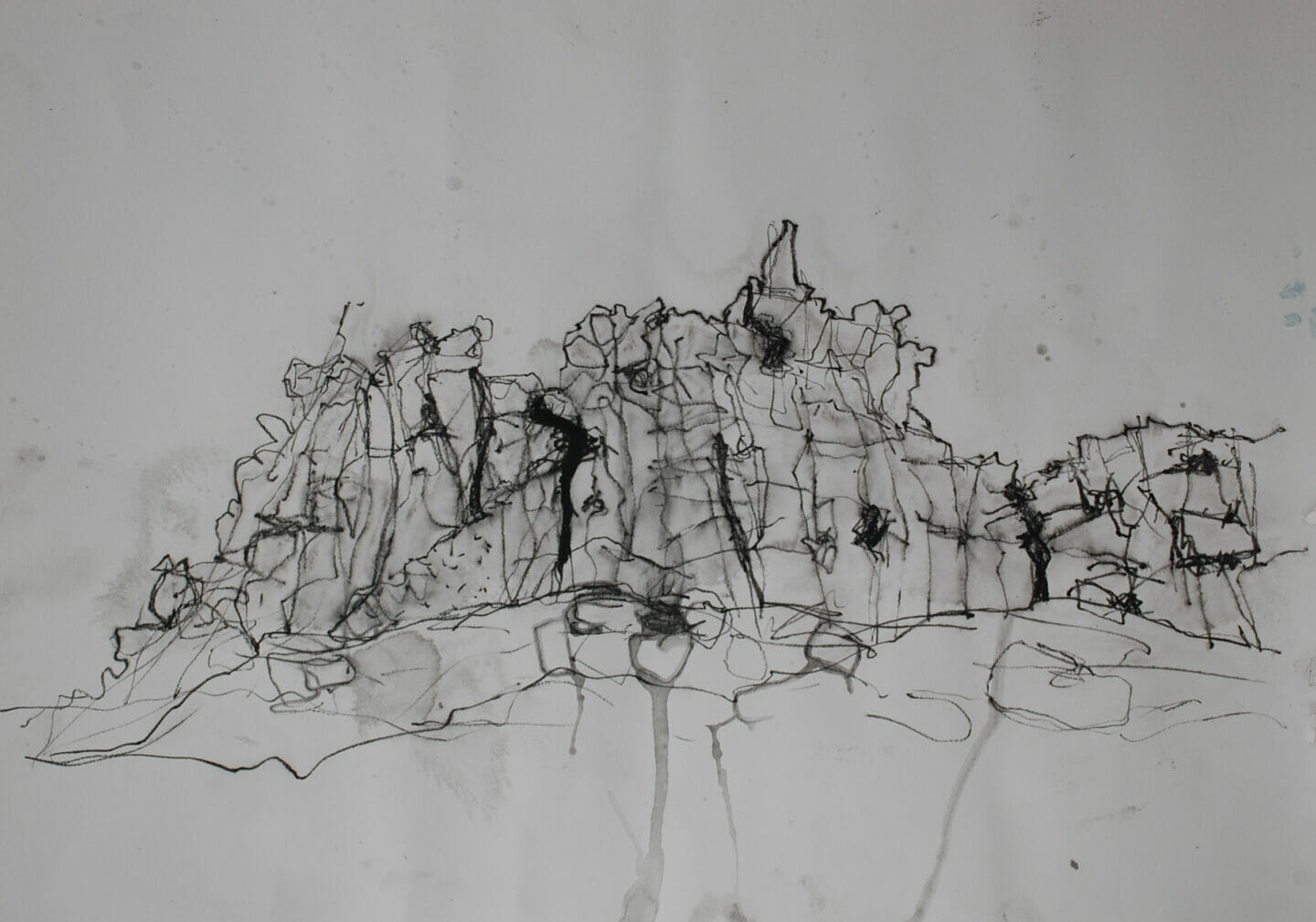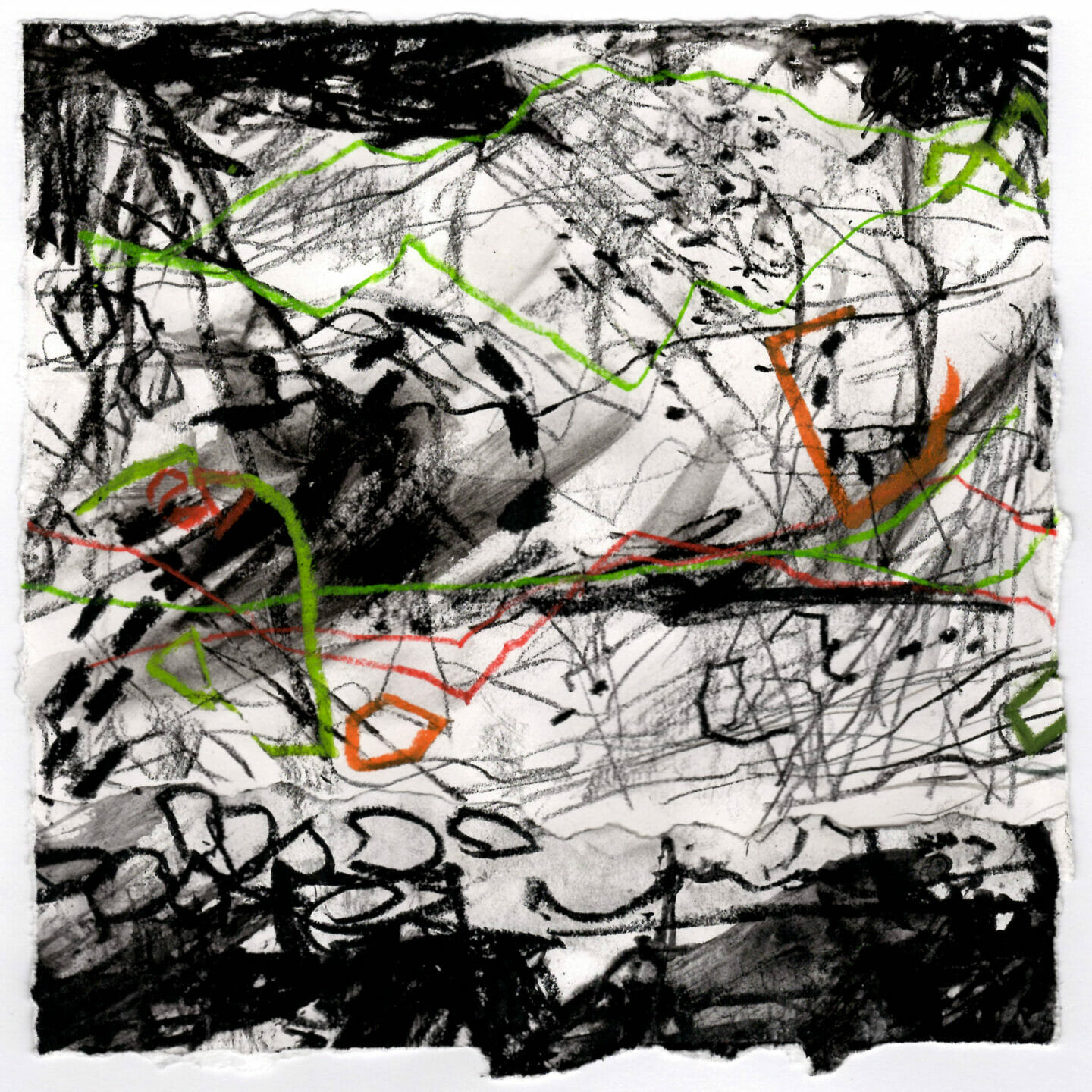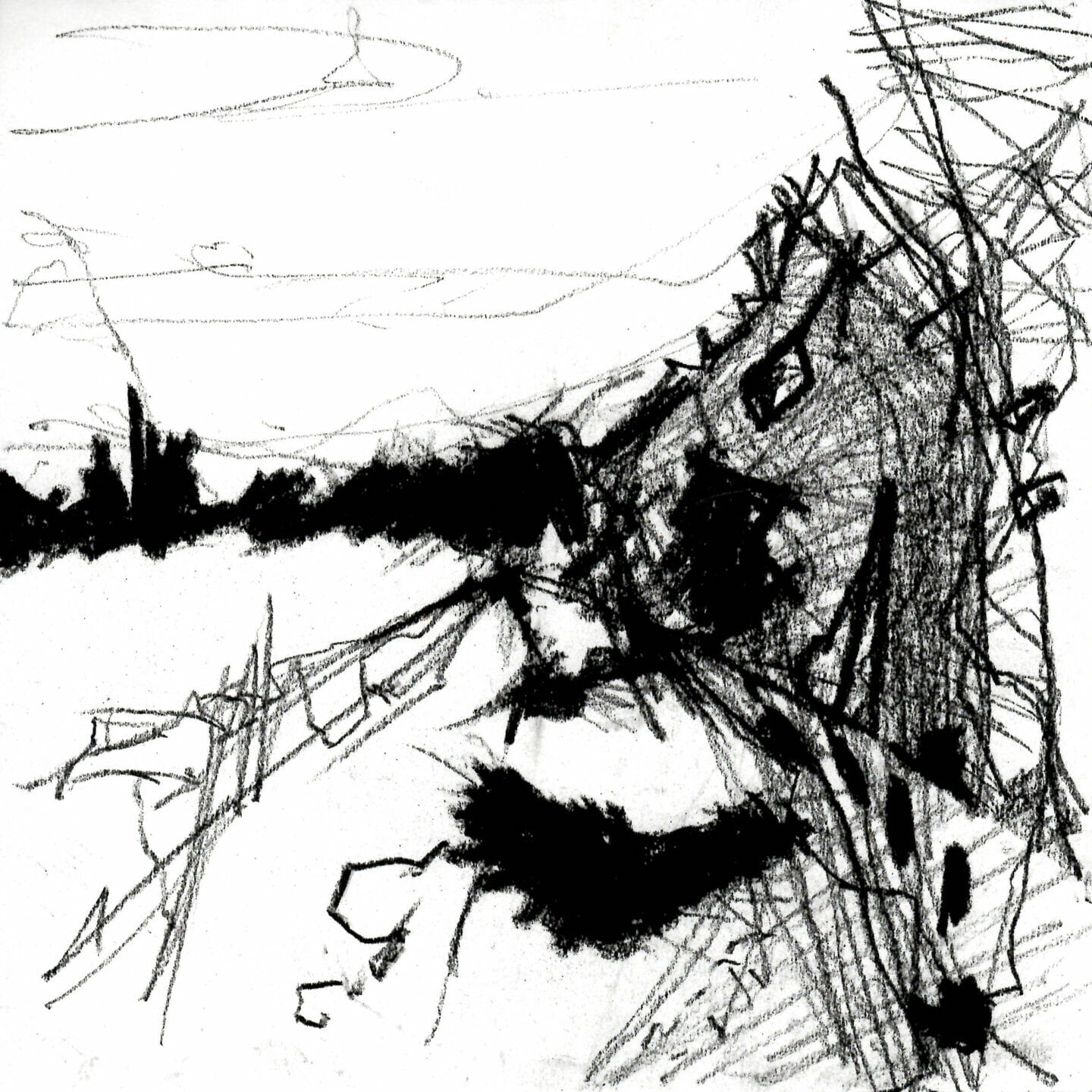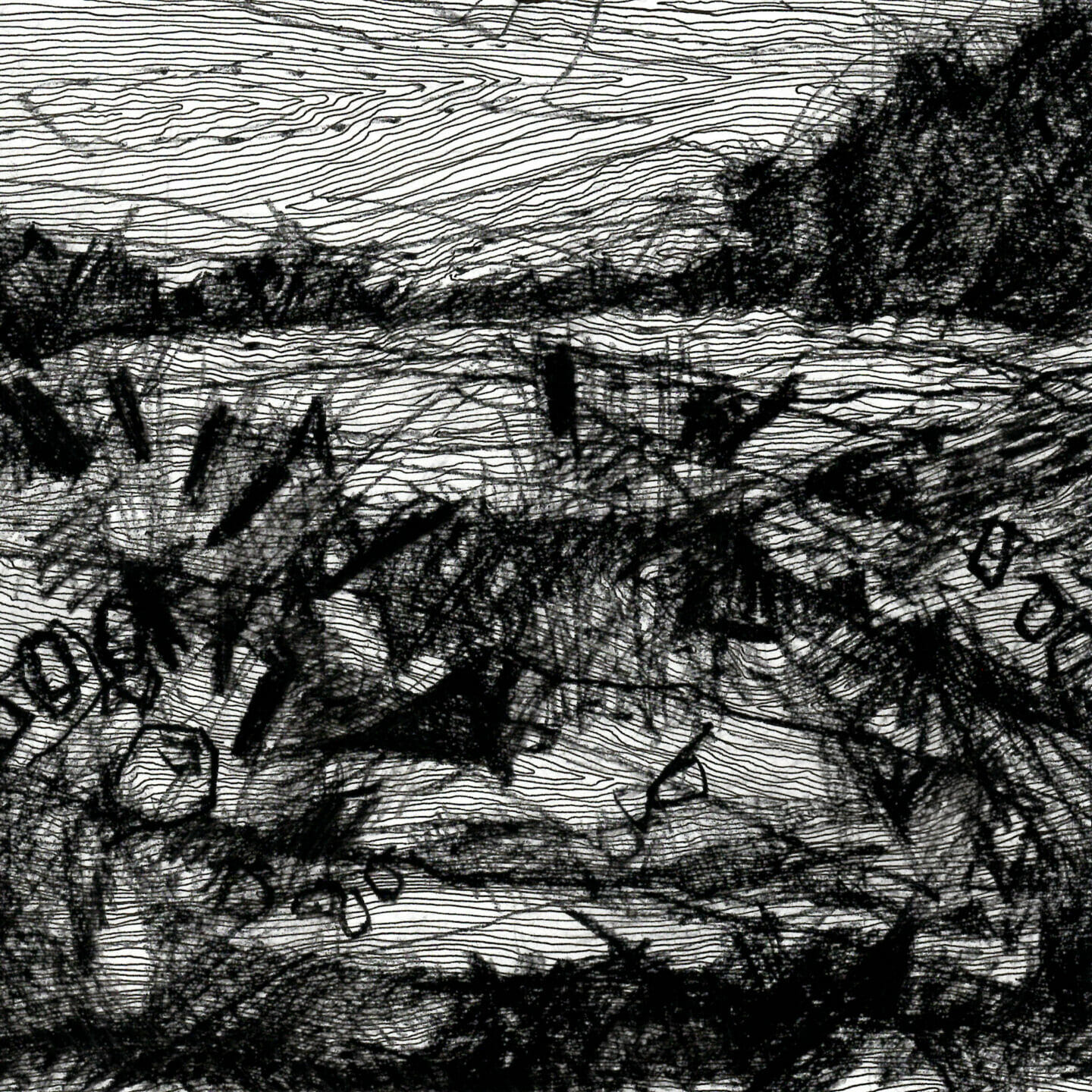Paul came to our attention during the pandemic – he regularly contributed to #mycreativeweek on Twitter where his bold lines and mark making and (almost) abstract
work really stood out as a very different take on landscape painting. This summer he visited Dartmoor, which gave us the perfect excuse to sit him down and let the Dartmoor Collective’s Stephen Peart fire a bunch of questions at him as to his background, practice and his recent visit to Dartmoor.
Stephen: Tell us a little bit about your background and how you got here?
Paul: I grew up in and currently live in Wolverhampton, though I’ve never really felt any connection with the place, other than family. I studied architecture in Birmingham, had a short spell in London and then returned to Wolverhampton where I work as an architect.
However, I am planning to move, most likely to Shropshire, which I visit fairly frequently and where there are varied landscapes. I seem to be drawn to moors, heaths, outcrops, marsh and dunes. In Shropshire I generally seek out the more dramatic parts – The Long Mynd, Carding Mill Valley, Caer Caradoc, The Stipertones. I also love Wales and used to spend a lot of time in Borth & Ynyslas in Ceredigion.
My artistic interests were reinvigorated during lockdown when I started experimenting more with drawing after several architectural projects were put on hold or shelved and I sold (for peanuts) a couple of pieces early on. This spurred me on to do more and I began to enjoy it more. It might be worth stating that when I started this process my work was more delicate, tentative even, lots of line drawing.
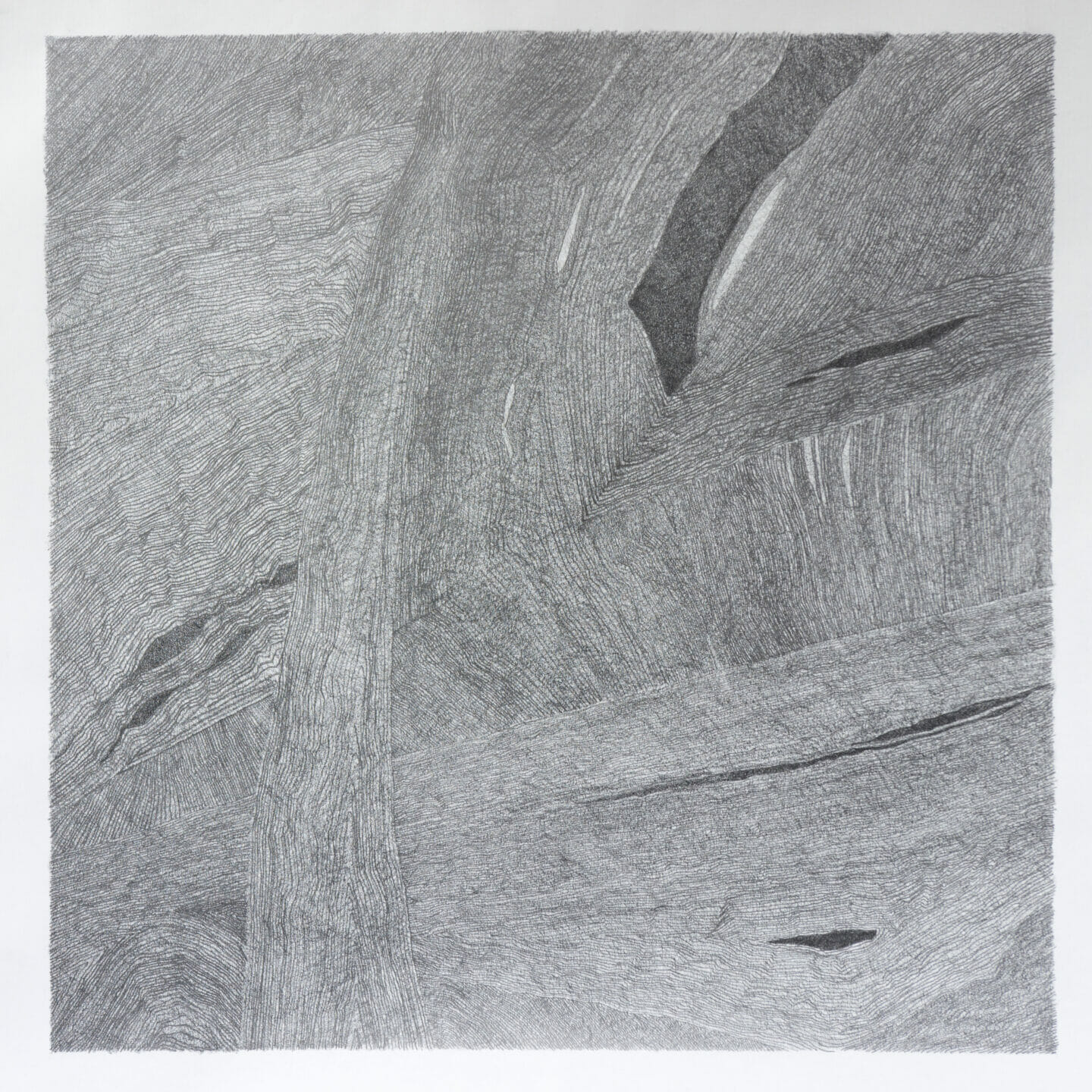
Stephen: You describe yourself as an ’emerging artist’. What do you mean by this?
Paul: I find labels both helpful and problematic – I tend not to use ‘artist’ largely out of confidence and largely as I have no training as one and generally assume the professional usage to be out of bounds. This might come from being an architect as we are very precious about our protected title!
I don’t like to use ‘amateur’ or ‘hobbyist’ as these sound rather too inconsequential even though this is probably what I am. ‘Emerging artist’ seems to fit well, as does ’self-taught’. I’m really not sure what to use, if anything.
Stephen: What is it about architects, art and abstraction? I’m thinking of both your work and that of Guy Dickinson.
Paul: In respect to your observations about Guy, my artwork is most definitely a reaction to CAD (Computer Aided Design) work and the precision/restriction of this type of work. It is possibly worth noting that most of my architectural work now is construction detailing rather than design – another frustration. There is definitely a crossover, and in fact when I went to school of architecture, even though I’d done some technical training, I struggled initially as the first few years were very arts orientated – I hadn’t even taken O Level art.
Stephen: How have you seen your working style develop as your confidence and experience has grown?
Paul: Obviously my confidence has grown. However, at the start of this year my wife had a bad accident and a week later my older brother passed away, so I disappeared into some fairly dark places. A combination of growing confidence coupled with these very difficult life events lead to further experimentation and an enhanced vigour in my work.
I tend towards rugged landscapes which is possibly why I was drawn to Dartmoor – primarily for the tors which are a great subject for drawing. I find the scale of the formations really challenging to capture; I think it’s to do with their apparent weight and static, solid nature. I’ve also had a longstanding fascination with archaeology and historic settlements. There is something deeply elemental about them which led me to produce some fairly dark pieces, heavy in charcoal, utilising vigorous marks that responded to the energy of these places.
I’m more interested in atmosphere and an emotional reaction to my surroundings. I find an aspect of the landscape that interests me, focus on that, and try to commit to making marks that are representational but not realistic. I also like to work quickly – this may be because I generally have to squeeze the art practice in between the day job, family commitments etc. Part of this is being able to make a number of sketches/studies quickly that I can then manipulate, crop and collage.
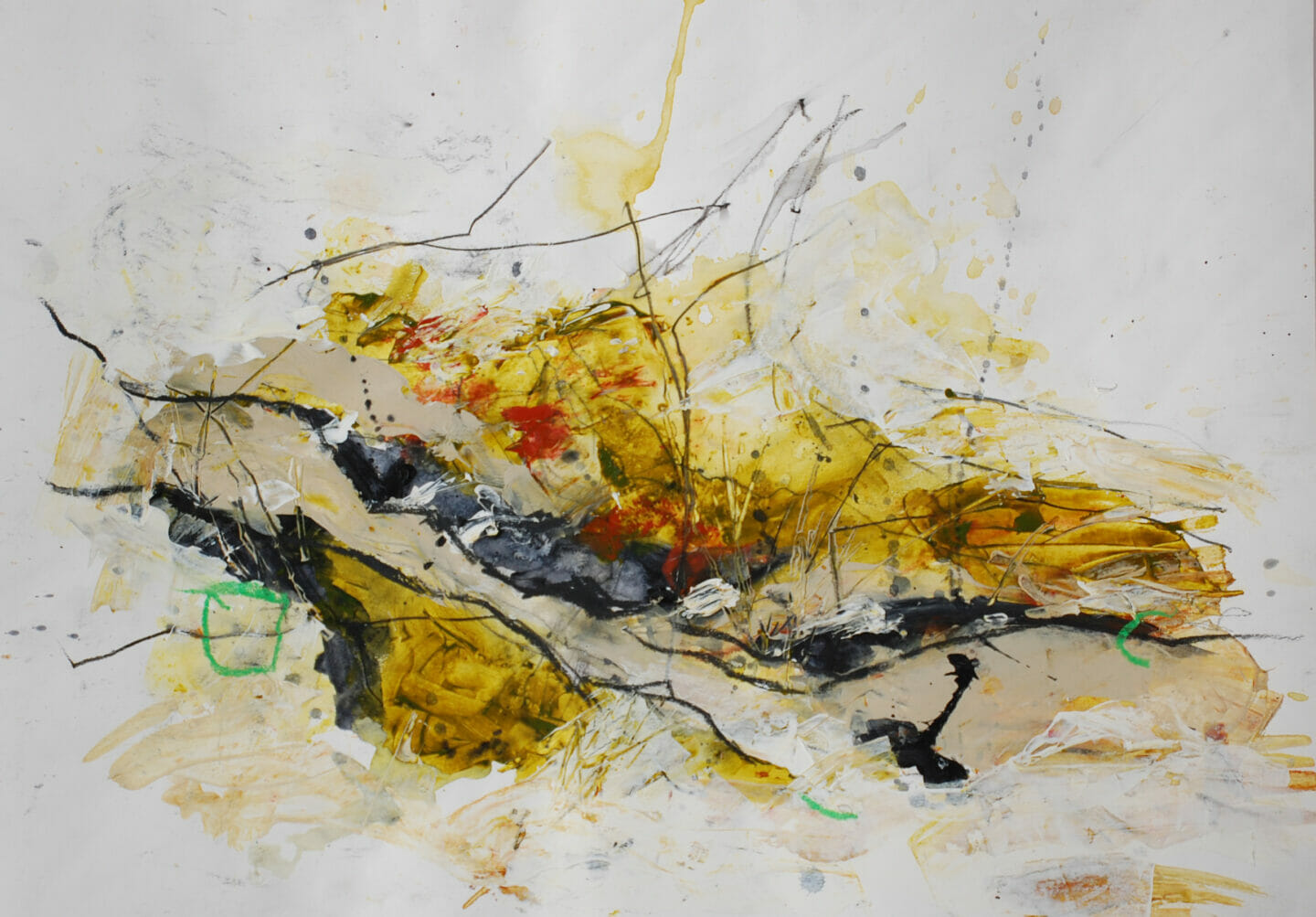
Stephen: One of the things that I particularly enjoy about your work is the fact that you never seem to ‘finish’ an image!
Paul: I never intend to make a ‘picture’! I’m not interested in producing an accurate representation of a place, again probably a reaction to the detail of architectural projects, though the level of abstraction does vary in my work.
Stephen: So let’s talk about Dartmoor. Not your first visit but perhaps your first visit with an artistic eye? How did you find it?
Paul: I really enjoyed Dartmoor. I had been before but this was the longest spell I’d had there. Having said that, while I covered a lot, I suspect that I barely scratched the surface. My expectations around what I was going to produce were really high, but to be honest, I think I was rather overwhelmed by all the places that I wanted to visit. I think I was also somewhat optimistic on what I was going to get out of the trip in drawing terms.
Having said that, I’m also excited by some of the work that I have produced. In fact the Yarner Wood studies have led me into attempting my largest ever piece, which is challenging as it means scaling up my mark making.
Stephen: Seeing the imagery of Yarner Wood emerge, develop and reconfigure has been really interesting.
Paul: The woodlands were a great source of inspiration. There was a much greater sense of enclosure, movement and colour – I think the very loose painted studies and the set of collages reflect this.
Stephen: And so, what next?
Paul: In terms of Dartmoor, I think that the wide expanse of the moor really needs another visit. More broadly my exploration of non-distinct place – or ‘margins’ as I tend to refer to them – as came out of some walks where it occurred to me that whilst there are the ‘normal’ routes and places to head to, there are also lesser spaces that hold interest. For example, a place I frequently visit is the Venus Pools Nature Reserve to the south west of Shrewsbury, where – aside from the obvious bird hides and pools – there are neighbouring meadows with unmarked walks or routes around the edges, and hedgerows that have a different character to more defined public routes.
There are also animal/cattle tracks that you find across moors and hills that seem to fit in with this idea and lead you to areas that wouldn’t normally be reached if you just followed the designated or waymarked trails. These seem to be a really subtle imprint in the landscape. The same could be said of sand dunes – yet to feature in my work, but no doubt will – where there are numerous routes/edges/interfaces that are interesting. Shorelines could be another. A trip to the coast is long overdue.
Follow Paul Wakelam on Instagram or Twitter.


